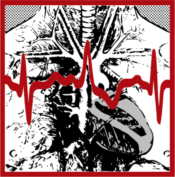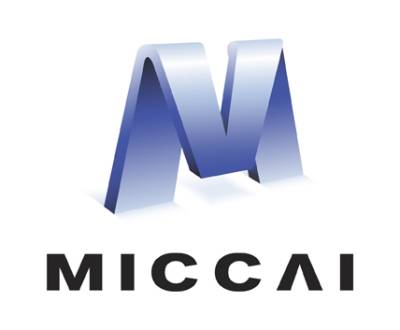Abstracts
Abstract collection for CinC 2024 is open. Please do consult our abstract preparation guidelines below.
Potential contributors are invited to submit, as an essential requirement, an abstract consisting only of text. They have the option of submitting, in addition, a similar abstract with the same title but in a PDF format in which equations, tables, illustrations, etc. can be included.
Traditional (plain text) abstracts: ESSENTIAL
Please submit a plain text abstract with a maximum of 300 words. This will ensure that the abstract fits in the space provided on one small page in the conference program/abstract book. A plain text abstract is required even if you submit a PDF version of the same abstract. Please see the section below on Submitting abstracts for further details of how to submit your text.
Materials such as equations and tables cannot be included in a plain text abstract; if you wish to include such elements, please consider submitting a supplementary PDF abstract (see the next section).
PDF (supplementary) abstracts: OPTIONAL
In addition to your plain text abstract, you may submit a PDF version of it, in which any of the following may appear:
- a figure
- a table
- one or more equations
- superscripts or subscripts
- bold or italicized text
- Greek or other non-Roman letters
PDF abstracts are subject to the same physical size limit as traditional abstracts (the abstract including its title block must fit on a single page within a 110×180 mm rectangle).
If your abstract is accepted, and you have submitted a properly formatted PDF version of it, the PDF version will appear in the conference program, and not the text version. See the Instructions for preparing PDF abstracts.
Submitting abstracts
Click here to deposit your abstract 2024. Please note that before submitting your abstract, you will be required to create a user name and password. The deadline for regular abstracts will be April 15 2024. We frequently receive requests asking for the exact time on the April 15 that the abstract submission system will close. Please treat the deadline as Midnight on the April 15 in your local time zone.
When your abstract is ready to be submitted, go to the CinC abstract and paper collection site and follow the instructions there to upload your text abstract (and, if applicable, the PDF version of it). When you have done so, you will receive a passcode for your abstract. You will need this passcode to revise your abstract and when submitting your full paper.
All submitted abstracts are reviewed in May or early June, and accepted abstracts are assigned to scientific sessions. Decision letters are sent by email to authors, all at the same time, by mid-June. Accepted abstracts are printed in the conference program distributed to CinC attendees, and they also appear in the on-line program that is available here throughout the summer before the conference.
You may revise your abstract at any time up until the abstract deadline; to do so, return to the CinC abstract and paper collection site and submit your revised abstract. After the abstract deadline (April 15), no further changes may be made. If your abstract is accepted, it will appear in the conference program book (both the printed booklet given to attendees and the on-line copy of it) with your unaltered title, list of authors, and text as you submitted them in April. Check spelling, and be sure to list all of your coauthors in the order you wish to have them appear in the program. Remember that an accepted paper must be presented by one of its authors at CinC in order to be published. (You may add, remove, or rearrange authors with their consent in your final paper, but not in the conference program book.)
If you lose your passcode, return to the CinC abstract and paper collection site, and request for your passcode to be sent to the contact email address that you entered when submitting the abstract.
Tips for writing a CinC abstract
The body of the abstract (exclusive of the title, authors, and authors’ affiliations) can be up to 300 words at most. It cannot contain footnotes or a bibliography. If you include a color figure in a PDF abstract, be certain that it is legible if printed in black and white. The language of the conference is English, and all abstracts and full papers must be written in English. Ask a friend or colleague who is not familiar with your work to read your abstract, and revise it if needed to make it understandable.
Three hundred words are insufficient to provide much detail about your work, but the impression your abstract makes on the reviewers determines if it will be accepted — so make every word count. If you have not previously written for CinC, read some of the abstracts from a previous year’s program to see what goes into a successful abstract. Ideally, it should be a mini-paper, with an introduction (why is the problem worth studying?), methods, results, and, if the results do not speak for themselves, a conclusion (what are the implications of the results?). Do not waste words by writing an abstract of the abstract as an introduction, or a summary of the abstract as a conclusion. It is most important to present results that show that you have done the work you propose to present; abstracts containing vague promises (“We will show …”) without any results will not be accepted.
Note that this does not mean that results obtained after you submit your abstract cannot be included in your presentation and your full paper. On the contrary, you are encouraged to present your most recent results; your abstract, however, needs to contain enough to earn it a place in the program even if you spend the summer on the beach rather than in the lab.
PDF abstracts may contain a figure or a table. Since the reviewers’ decision to accept a presentation, and the conference participants’ decisions to attend a presentation, are determined not by the full paper but by the abstract, a well-chosen figure or table may help some authors to convey important aspects of their work that are difficult or impossible to describe in a few words. Don’t compress your work beyond legibility, however! You will have much better opportunities to present the details at the conference, in your full paper, and in subsequent publications.
See Hints for Preparing a Good Abstract for further thoughts on how to create a high-quality abstract.


